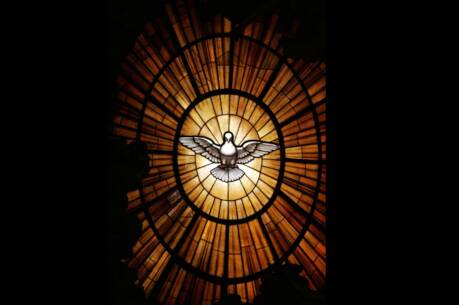Already and Not Yet
We are coming close to the end of one church year and the beginning of another. Next Sunday is the feast of Christ the King, and the following Sunday is the first Sunday of Advent. On these Sundays the Scripture readings lead us to consider “the last things” or what is often called “eschatology.” In the biblical context eschatology includes the resurrection of the dead, the last judgment, rewards and punishments and the fullness of God’s kingdom.
One way to grasp how the New Testament approaches eschatology is to use the terms “already” and “not yet.” Applying these terms to today’s Scripture readings can help us to understand a difficult topic and to reflect on how it might have an impact on how we think and live as Christians.
An excellent statement of what “already” means in the context of New Testament eschatology comes in today’s reading from Hebrews 10. There the author first contrasts the many sacrifices offered by Jewish high priests in the Jerusalem temple with the one perfect sacrifice offered by Jesus in his death on the cross. Whereas their repeated sacrifices failed to take away the sins of the people (otherwise they would not have kept offering them), Jesus “offered one sacrifice for sins and took his seat forever at the right hand of God.” Most of Hebrews is an extended meditation on the significance of Jesus’ death and resurrection for us. It describes Jesus both as the perfect sacrifice for sins (perfect in that it achieved its goal) and as the great high priest (in that he willingly offered himself). His sacrifice made possible the forgiveness of sins and a new relationship between God and humankind. This new relationship is what we can enjoy through Christ already.
The “not yet” refers to the fact that the new relationship with God through Jesus’ death and resurrection represents the inauguration or anticipation of the future coming of God’s kingdom in its fullness. Paul used metaphors such as pledge, down payment and first fruits to describe the “already” dimension. He and the other New Testament writers insisted that the fullness of God’s kingdom remains in the future as “not yet.”
The “not yet” dimension is rooted in Jewish apocalypticism and is well illustrated by today’s reading from the Book of Daniel 12. At the end of a long, detailed reflection on ancient Near Eastern history from the sixth to the second centuries B.C., this short passage describes the “great tribulation,” the resurrection of the dead and the divine judgment with its rewards for the wise and righteous and punishments for the foolish and wicked. This scenario includes the earliest indisputable description of the resurrection of the dead contained in the Old Testament. By the time of Jesus and the New Testament writers this scenario was taken for granted in many Jewish circles. It underlies the “not yet” element in early Christian texts.
The “not yet” theme is also developed in today’s selection from Mark 13, which is part of Jesus’ eschatological discourse. The text offers a picture of the end of the world as we know it and the last judgment. It uses images from various parts of the Old Testament, especially from Daniel 7, to depict these events and the coming of the Son of Man in glory. It also warns us to be attentive to the signs of the so-called second coming of Jesus, and it ends with a reminder that no one knows its exact day or hour.
What does the “not yet” mean for us? How should it affect our faith and lives? In Mark 13 and the other versions of Jesus’ eschatological discourse in Matthew 24–25 and Luke 21, the apocalyptic scenario is followed by sayings and parables that urge readers to be always on guard, vigilant and watchful. We are to act always as if the Son of Man were to come very soon. We are to conduct ourselves always as if we were to face our judgment in the next moment. This is not a stance of anxiety or fear. Rather it is a stance of hope, trust and confidence that what God has begun in Jesus’ life, death and resurrection (the “already”) God will surely bring to a glorious completion in the future (the “not yet”).
The terms “already” and “not yet” capture the New Testament dynamic of eschatology. Through Jesus’ death and resurrection we have already been freed from domination by sin and death and freed for life in the Holy Spirit. And so we can now stand beside Jesus and address God as “Our Father,” as we look forward in hope for the fullness of God’s kingdom. As we live between the times of the “already” and the “not yet,” we continue to pray “Thy kingdom come!”
This article also appeared in print, under the headline “Already and Not Yet,” in the November 13, 2006, issue.







